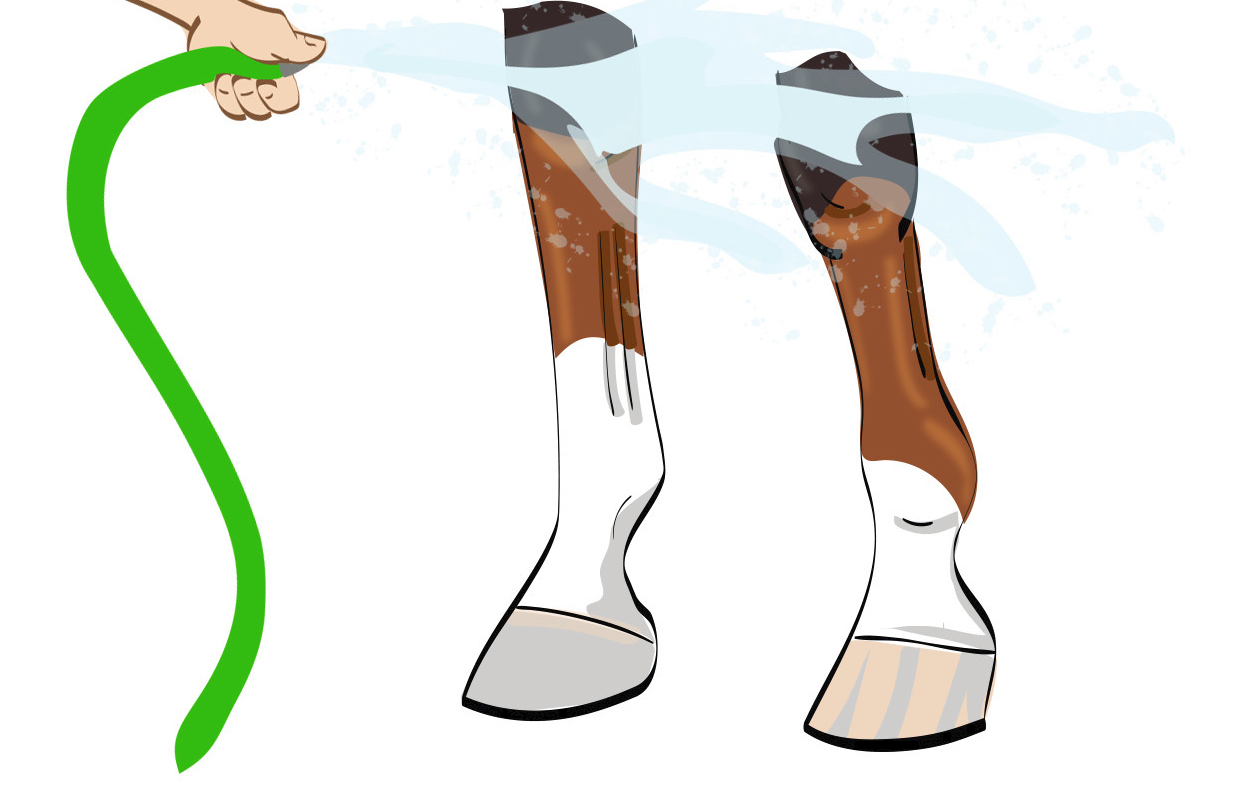
1. True or false: Icing your horse’s leg can treat an injury, but it’s a myth that cold therapy can serve as a preventative to injury.
T / F
2. True or false: Applying cold to an injury works by decreasing blood flow to the area.
T / F
3. Cold therapy can be safely provided to your horse’s legs via which of these methods?
A) Cold hosing or ice packing.
B) Ice boots or specialty leg wraps.
C) All of the above.
D) None of the above.
4. One useful adjunct to cold therapy for horses’ legs is the addition of…
A) elevation.
B) compression.
C) concussion.
HOW’D YOU DO? (Answers below.)
1. F is correct. Cold therapy definitely *can* serve as a preventative to injury after a strenuous workout. Icing your horse’s legs (by cold-hosing or applying ice boots and/or applying a poultice or bracing liniment) cools the tendons, soft tissues, and hooves, helping ward off inflammation and swelling.
Needing some boots to make icing your horse’s legs easier? Consider Tough 1 ice boots, Finntack ice wraps, or Horseware Ireland’s Ice-Vibe boots.
Products we feature have been selected by our editorial staff. If you make a purchase using the links included, we may earn a commission. For more information click here.
[READ: World champion trainer Bob Avila’s ‘Ode to Icing.’]
2. T is correct. By decreasing the blood flow, cold therapy lessens bleeding and bruising, counteracts inflammation/swelling, and provides some pain relief. Your goal is to lower your horse’s tissue temperature from its existing level to 59-66 degrees F, but any reduction in temperature is helpful.
3. C is correct. All of these methods are valid. Cold water directly from a hose is easy to do and can help to clean a wound as well as chill it. Ice packing can be accomplished with crushed ice in a plastic bag, a chemical ice pack (“blue ice”), even a package of frozen peas. Commercial ice boots (including models that hold ice gel packs on the leg and those that enable you to submerge your horse’s leg in ice water) are convenient and highly effective. Specialty leg wraps include flexible, gel-filled wraps you chill and apply, as well as self-cooling wraps.
[RELATED: A barrel-racer’s best tips for maintaining healthy legs.]
4. B is correct. Compression in conjunction with cold therapy can be quite effective, especially for tendon and ligament issues. Mechanical “squeeze and release” compression wraps are a way of providing both cold and compression to a horse’s legs.
[MORE TIPS on using cold therapy on your horse’s legs.]
Hey! Not already receiving H&R’s fun and informative newsletter? Sign up right now for The Ride. It’s free!






